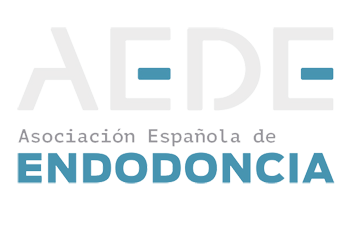Volumen 32 - Número 3
Análisis espectrofotométrico de la decoloración dental inducida por MTA blanco y Biodentine
Por: Marta Vallés, Montse Mercadé, Fernando Durán-Sindreu, Carlota Suarez, Miguel Roig
Resumen del artículo:
RESUMEN
Objetivo: Evaluar el potencial de decoloración del ProRoot BMTA y del Biodentine en dientes humanos bajo condiciones de iluminación artificial.
Material y métodos: 19 dientes humanos fueron divididos en dos grupos experimentales (n=8) y un grupo control (n=3). Los dientes fueron seccionados1 mm por debajo de la unión amelocementaria (UAC), se les extirpó la pulpa cameral y se les preparó una cavidad. Las cavidades de los gruposexperimentales fueron obturadas con ProRoot BMTA® y con Biodentine®, en el grupo control no se colocó ningún material. Tras 48 horas, todas lascavidades se obturaron con composite y se colocaron 10 cm debajo de una lámpara, al 100% de humedad. El color fue registrado utilizando unespectrofotómetro en cuatro momentos: tras la colocación de material, tras la restauración coronal, una y dos semanas después de la restauración.
Resultados: Se observaron diferencias significativas entre los dos grupos experimentales. El grupo BMTA mostró un cambio de color mayor que el deBiodentine, a las 48 horas, a la semana y a las 2 semanas. A las 48 horas, el BMTA presentó oscurecimiento, que fue aumentado con el tiempo, revelandodiferencias significativas entre los tres intervalos. No se observaron diferencias significativas entre el Biodentine y el grupo control durante todo eltiempo.
Conclusiones: Debido al hecho de que el Biodentine mostró una mayor estabilidad de color que el BMTA, este se podría recomendar en tratamientosque requieran de materiales de silicato cálico (CSM) en zonas de compromiso estético. Sin embargo, se necesitan estudios a más largo plazo.
PALABRAS CLAVEBiodentine; Agregado trióxido mineral blanco; Color; Óxido de bismuto.
ABSTRACT
Objective: To evaluate the discoloration potential of ProRoot WMTA and Biodentine in human teeth under artificial lighting conditions.
Methods: 19 human teeth were divided into two experimental groups (n=8) and one control group (n=3). The teeth were sectioned 1 mm below the CEJ, thepulps were extirpated and a cavity was prepared. The experimental groups’ cavities were filled with ProRoot WMTA® and with Biodentine®, no material wasplaced in the control group. After 48 hours, all the cavities were sealed with composite and the specimens were placed 10 cm below a lamp in a 100% humidityenvironment. Color values were recorded using a spectrophotometer at four time points: after the material placement, after the coronal restoration, at one andtwo weeks after restoration.
Results: Significant differences were observed between the experimental groups. WMTA group showed a more perceptible discoloration than did Biodentine at48 hours, 1 week and 2 weeks. At 48-hour time point WMTA presented a discoloration, which increased over time, showing significant differences between thethree time intervals. No significant differences were observed between Biodentine and the control group in the three time intervals.
Conclusions: Due to the fact that Biodentine showed greater color stability than did WMTA, Biodentine is recommended in treatments requiring calciumsilicate materials (CSMs) for esthetically sensitive areas. However, more long-term studies are needed to verify our findings.
KEY WORDSBiodentine; White mineral trioxide aggregate; Color; Bismuth oxide.






